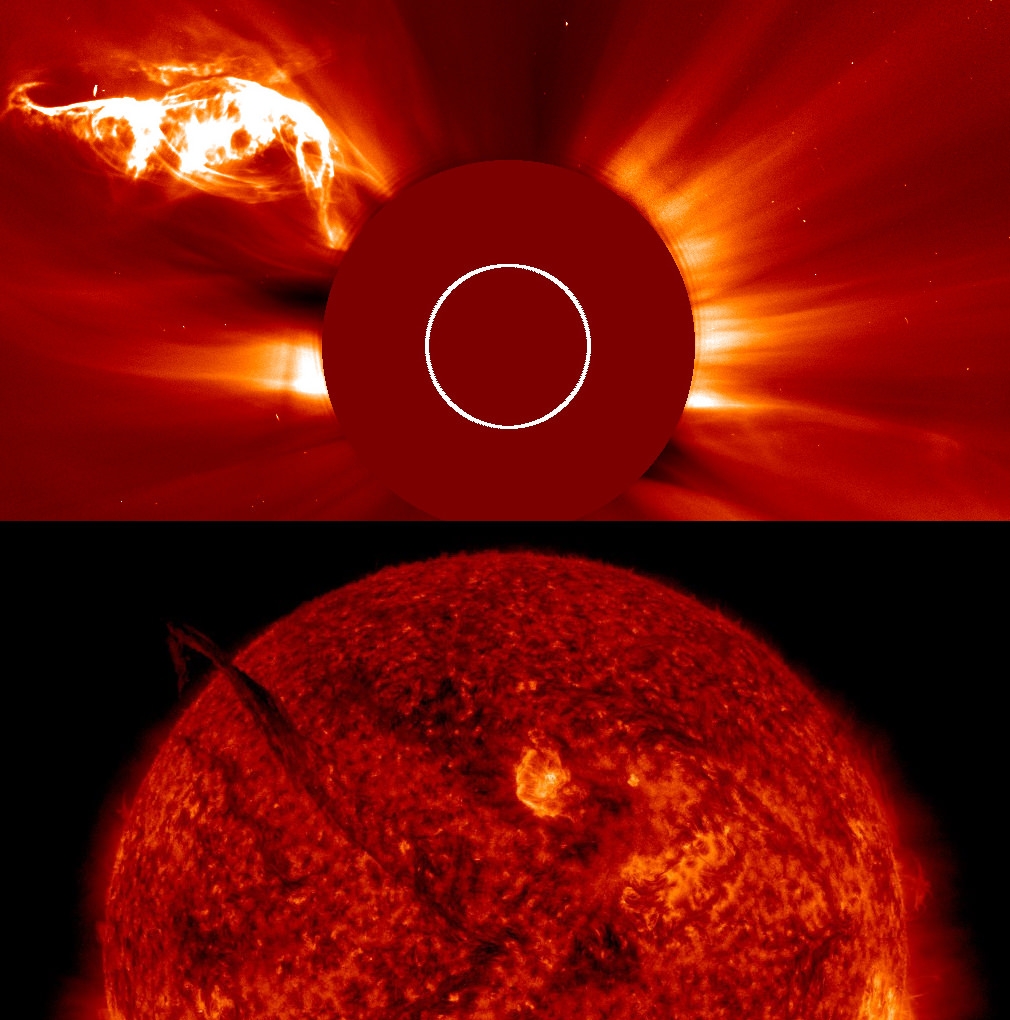Over the course of April 28–29 a gigantic filament, briefly suspended above the surface* of the Sun, broke off and created an enormous snakelike eruption of plasma that extended millions of miles out into space. The event was both powerful and beautiful, another demonstration of the incredible energy and activity of our home star…and it was all captured on camera by two of our finest Sun-watching spacecraft.
Watch a video of the event below.
Made from data acquired by both NASA’s Solar Dynamics Observatory (SDO) and the joint ESA/NASA SOHO spacecraft, the video was compiled by astronomer and sungrazing comet specialist Karl Battams. It shows views of the huge filament before and after detaching from the Sun, and gives a sense of the enormous scale of the event.
At one point the plasma eruption spanned a distance over 33 times farther than the Moon is from Earth!
Filaments are long channels of solar material contained by magnetic fields that have risen up from within the Sun. They are relatively cooler than the visible face of the Sun behind them so they appear dark when silhouetted against it; when seen rising from the Sun’s limb they look bright and are called prominences.
When the magnetic field lines break apart, much of the material contained within the filaments gets flung out into space (a.k.a. a CME) while some gets pulled back down into the Sun. These events are fairly common but that doesn’t make them any less spectacular!
Also read: Watch the Sun Split Apart
This same particularly long filament has also been featured as the Astronomy Picture of the Day (APOD), in a photo captured on April 27 by Göran Strand.
For more solar news follow Karl Battams on Twitter.
Image credits: ESA/NASA/SOHO & SDO/NASA and the AIA science team.
*The Sun, being a mass of incandescent gas, doesn’t have a “surface” like rocky planets do so in this case we’re referring to its photosphere and chromosphere.


